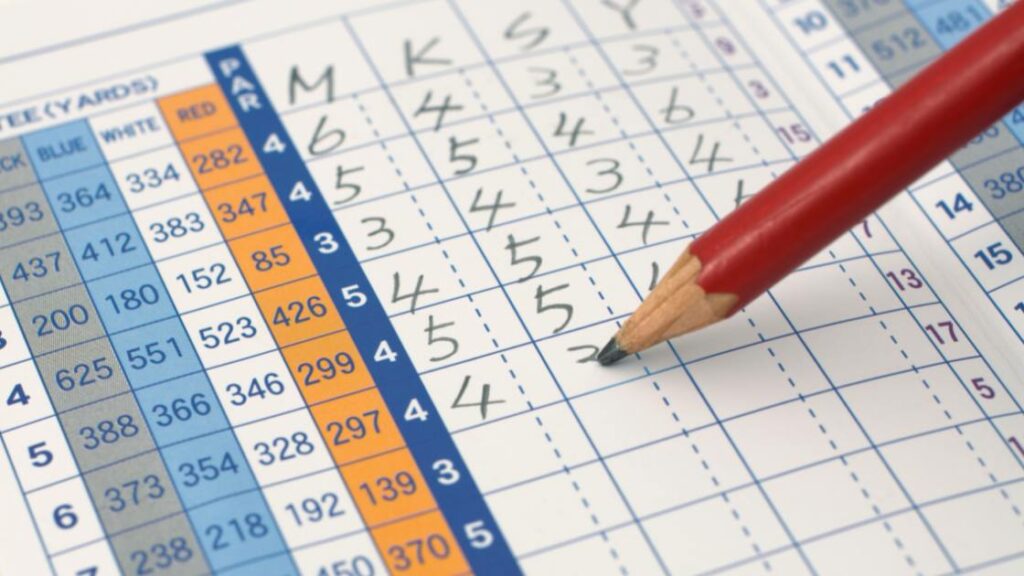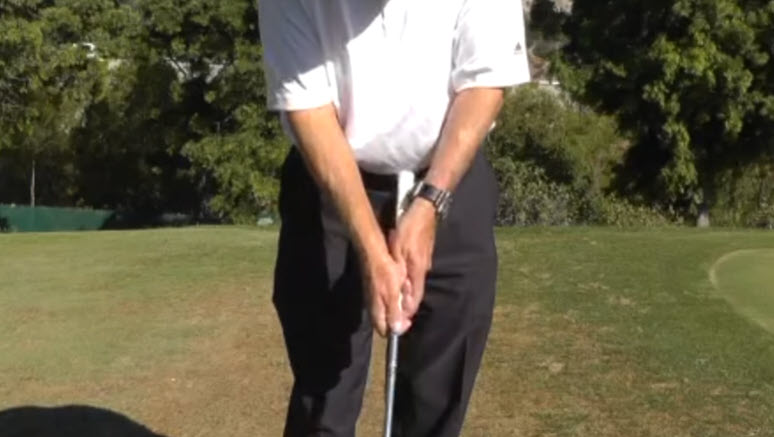Looking for First Time Golfing Tips? Well, you’re in the right place! Golf is a popular sport that can be enjoyed by people of all ages and skill levels. Whether you are a seasoned athlete or a beginner, golf offers a fun and challenging experience that can be enjoyed alone or with friends. However, for those who have never played before, the sport can be intimidating.
There are many rules, techniques, and etiquette considerations to keep in mind. This article will provide some helpful tips for those who are new to the game and want to make the most of their first golfing experience.
One of the most important things to keep in mind when golfing for the first time is to be patient. Golf is a complex sport that requires practice and dedication to master. It is important to approach the game with a positive attitude and an open mind. It is also important to remember that everyone starts somewhere, and even the best golfers were once beginners.
Another important tip for those new to golf is to take lessons or seek guidance from more experienced players. Golf is a sport that requires proper technique and form, and it can be difficult to learn on your own.
Taking lessons from a professional or seeking advice from a more experienced golfer can help you develop the skills you need to succeed on the course. Additionally, it is important to familiarize yourself with the rules and etiquette of the game to ensure a positive experience for yourself and those around you.
Understanding Golf Basics

Golf is a sport that requires patience, skill, and strategy. Before heading out to the course, it’s important for first-time golfers to understand the basics of the game. This section will cover two essential topics: golf terminology and golf equipment essentials.
Golf Terminology
Golf has its own unique terminology that can be confusing for beginners. Here are some of the most common golf terms to know:
- Par: The number of strokes a skilled golfer is expected to take to complete a hole.
- Birdie: One stroke under par.
- Eagle: Two strokes under par.
- Bogey: One stroke over par.
- Double bogey: Two strokes over par.
- Fairway: The area of short grass between the tee box and the green.
- Green: The area of short grass surrounding the hole.
- Rough: The longer grass surrounding the fairway.
- Bunker: A sand trap on the course.
- Driver: The club used to hit the ball the farthest distance.
Knowing these terms will help first-time golfers understand the scorecard and communicate with other golfers on the course.
Golf Equipment Essentials

To play golf, certain equipment is necessary. Here are the essential pieces of equipment for first-time golfers:
- Golf clubs: A set of clubs typically includes a driver, fairway woods, irons, and a putter.
- Golf balls: Golf balls come in a variety of brands and styles. It’s important to choose a ball that matches the player’s skill level.
- Golf bag: A bag to carry the clubs and other equipment.
- Golf shoes: Shoes with spikes on the sole to provide traction on the course.
- Golf glove: A glove to provide grip on the club.
- Tees: Small pegs used to hold the ball in place for the first shot of each hole.
It’s vital for first-time golfers to invest in quality equipment that fits their body and swing. A knowledgeable salesperson at a golf store can help with selecting the right equipment.
By understanding golf terminology and having the necessary equipment, first-time golfers can start playing the game with confidence.
First Time at the Golf Course

Golf can be an intimidating sport, especially for beginners. But with the right mindset and preparation, your first time at the golf course can be an enjoyable experience. Here are some tips to help you navigate your first round of golf.
Course Etiquette
Golf is a sport that values etiquette and respect for the course and other players. Here are some basic rules to keep in mind:
- Dress appropriately: Wear golf attire that is comfortable and appropriate for the weather. Avoid wearing jeans, t-shirts, or athletic shorts.
- Be punctual: Arrive at the course at least 30 minutes before your tee time to check in, warm up, and get familiar with the course.
- Respect the course: Repair divots, rake bunkers, and avoid damaging the greens.
- Be quiet: Keep noise to a minimum when other players are hitting their shots.
- Don’t litter: Dispose of trash properly and keep the course clean.
Navigating the Course
Navigating the course (golf course management) can be a challenge for first-time golfers. Here are some tips to help you find your way:
- Use a course map: Most golf courses provide a map of the course layout. Study the map before your round to get familiar with the layout and hazards.
- Follow the signs: Look for signs that indicate the direction to the next hole or hazard.
- Keep pace: Be aware of the pace of play and keep up with the group in front of you. If you fall behind, let faster groups play through.
- Be safe: Stay clear of other players when they are hitting their shots and avoid hitting into groups ahead of you.
By following these tips, you can have a successful and enjoyable first round of golf. Remember to stay relaxed, have fun, and enjoy the beautiful scenery of the golf course.
Mastering Golf Techniques
To become a successful golfer, one must master the fundamental techniques of the sport. The following sub-sections will cover the three most important techniques that every beginner should focus on mastering: Grip, Stance, and Swing.
Grip

The grip is one of the most important aspects of a golfer’s technique. A proper grip can help a golfer control the clubface and hit the ball with more accuracy.
The grip should be firm but not too tight, with the left hand placed at the top of the club and the right hand below it for right-handed golfers. The fingers should wrap around the club, and the thumbs should point down the shaft.
More Reading: Strong Vs Weak Golf Grip
Stance

The stance is the foundation of a golfer’s swing. A proper stance can help a golfer maintain balance and generate more power.
The feet should be shoulder-width apart, with the ball positioned in the middle of the stance. The knees should be slightly bent, and the weight should be evenly distributed between both feet.
Swing

The swing is the most complex aspect of a golfer’s technique. A proper swing can help a golfer generate more power and hit the ball with more accuracy. The swing should be a smooth, fluid motion that begins with a backswing, followed by a downswing, and ends with a follow-through.
The backswing should be slow and deliberate, with the clubhead pointing towards the ground. The downswing should be initiated by the hips, with the clubhead accelerating towards the ball. The follow-through should be a natural extension of the swing, with the golfer’s body facing the target.
In conclusion, mastering the fundamental techniques of golf is essential for beginners to become successful golfers. By focusing on the grip, stance, and swing, beginners can improve their accuracy, power, and consistency on the course.
Improving Your Game
If you want to improve your golf game, there are a few things you can do to get better. This section will cover two areas: Practice Drills and Mental Strategies.
Practice Drills
One of the best ways to improve your golf game is to practice regularly. Here are a few drills that can help you improve your skills:
- Putting Practice: Set up a putting green in your backyard or use a putting mat indoors. Practice putting from different distances and angles. Focus on keeping your putts on line and hitting the ball with the right speed.
- Chipping Practice: Set up a chipping net or use a bucket as a target. Practice hitting chip shots from different distances and lies. Focus on hitting the ball with the right trajectory and spin.
- Driving Practice: Use a driving range or set up a net in your backyard. Practice hitting drives with different clubs. Focus on hitting the ball with the right trajectory and distance.
Mental Strategies
Golf is a mental game as much as it is a physical one. Here are a few mental strategies that can help you improve your game:
- Visualization: Before hitting a shot, visualize the shot in your mind. Imagine the ball going exactly where you want it to go. This can help you focus and make a better swing.
- Positive Thinking: Focus on the positive aspects of your game. Don’t dwell on your mistakes or bad shots. Instead, focus on what you did well and how you can improve.
- Breathing Exercises: Take deep breaths before hitting a shot. This can help you relax and focus on the task at hand.
By practicing regularly and using mental strategies, you can improve your golf game and become a better player.
Additional Resources
For those who want to learn more about golfing or improve their skills, there are plenty of resources available. Here are a few options to consider:
Golf Instruction Books
There are countless books available on the topic of golf instruction.
Some popular options include:
- Ben Hogan’s Five Lessons: The Modern Fundamentals of Golf
- The Anatomy of Greatness: Lessons from the Best Golf Swings in History by Brandel Chamblee
- The Golf Handbook: The Complete Guide to the Greatest Game by Vivien Saunders
These books can provide valuable insights and tips for golfers of all skill levels.
Golfing Websites
There are many websites dedicated to golfing, including this one of course, along with Golf Digest, Golf.com, and PGA.com.
These sites offer a wealth of information on everything from golf news and equipment reviews to tips for improving your game. Additionally, many golf courses have their own websites with information on course layout, fees, and more.
Golf Instructors
For those who prefer a more hands-on approach, working with a golf instructor can be a great way to improve your skills.
Many golf courses have their own instructors on staff, or you can find independent instructors in your area. A good instructor can help you identify areas for improvement and provide personalized guidance on how to improve your game.
Golf Apps
There are also many golf apps available for smartphones and tablets. Some popular options include Golfshot, MyRoundPro, and GolfNow. These apps can provide a variety of features, including GPS yardage tracking, scorekeeping, and tee time booking.
Overall, there are many resources available for those who want to improve their golf game. Whether you prefer books, websites, instructors, or apps, there is something out there for everyone. By taking advantage of these resources, golfers can continue to develop their skills and enjoy the game to the fullest.
Conclusion
In conclusion, golf can be a challenging but rewarding sport for beginners. It requires patience, practice, and a willingness to learn. By following the tips provided in this article, beginners can improve their game and enjoy the experience of playing golf.
The most important thing for beginners to remember is to focus on the basics, such as their stance, setup, and posture. By mastering these fundamentals, they can build a solid foundation for their swing and improve their accuracy and distance.
It is also important for beginners to have the right equipment, including clubs that are appropriate for their skill level and body type. They should also dress appropriately for the course, wearing comfortable clothing and shoes that allow for ease of movement.
Finally, beginners should not be afraid to ask for help or advice from more experienced golfers. Golf is a social sport, and many players are happy to share their knowledge and experience with others.
Overall, with practice and perseverance, beginners can become skilled golfers and enjoy the many benefits that this sport has to offer.
Frequently Asked Questions
What are some beginner-friendly golf courses?
There are many beginner-friendly golf courses available for those who are just starting out. Some courses offer shorter holes, wider fairways, and less challenging terrain. A few examples of beginner-friendly courses include GolfNow, TopGolf, and Golf Digest’s list of best golf courses for beginners.
What are some basic golf etiquette rules for beginners?
Golf has a set of etiquette rules that all players should follow. Some basic rules for beginners include:
- Be quiet and still while other players are taking their shots
- Repair any divots or ball marks on the green
- Don’t walk on another player’s putting line
- Let faster groups play through
- Don’t spend too much time looking for lost balls
How can I improve my golf swing as a beginner?
Improving your golf swing takes practice and patience. Some tips for beginners include:
- Start with a relaxed grip on the club
- Keep your head still and eyes on the ball during your swing
- Keep your feet shoulder-width apart and knees slightly bent
- Use your hips to turn your body during your swing
- Practice at the driving range to improve your form
What are some common mistakes to avoid when golfing for the first time?
Some common mistakes to avoid when golfing for the first time include:
- Trying to hit the ball too hard
- Not keeping your head still during your swing
- Using the wrong club for the shot
- Not following proper golf etiquette rules
- Getting frustrated and giving up too quickly
What should I wear for my first time golfing?
Golf has a dress code that varies from course to course. In general, it’s best to wear comfortable, athletic clothing that allows for a full range of motion. Collared shirts, shorts or pants, and golf shoes with soft spikes are usually required. It’s important to check the dress code for the specific course you’ll be playing at before you go.
Are there any tips for managing my nerves when golfing for the first time?
It’s common to feel nervous when golfing for the first time. Some tips for managing nerves include:
- Take deep breaths and try to relax
- Focus on your breathing and your swing
- Visualize yourself hitting a successful shot
- Don’t worry too much about your score, just focus on having fun
- Play with a more experienced golfer who can offer guidance and support

